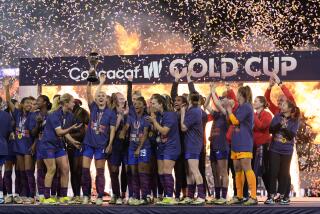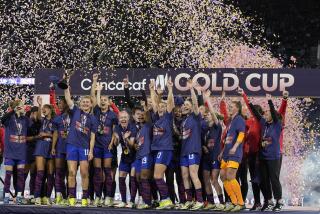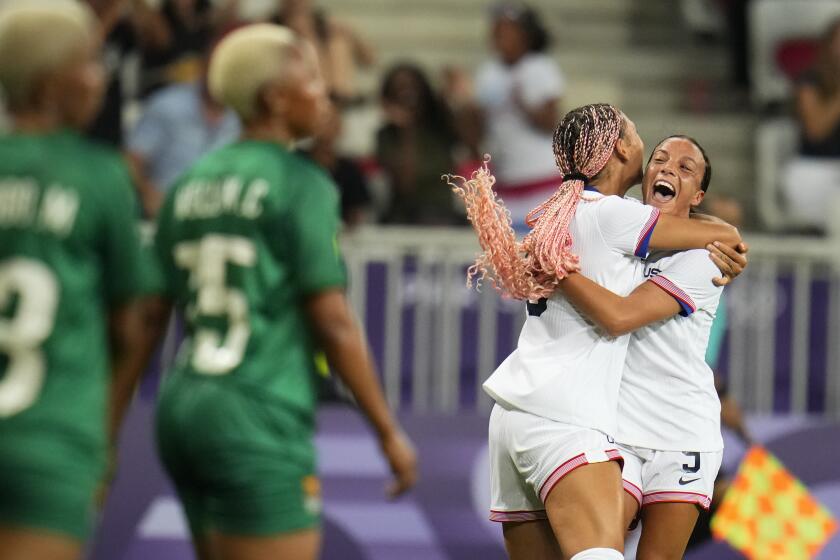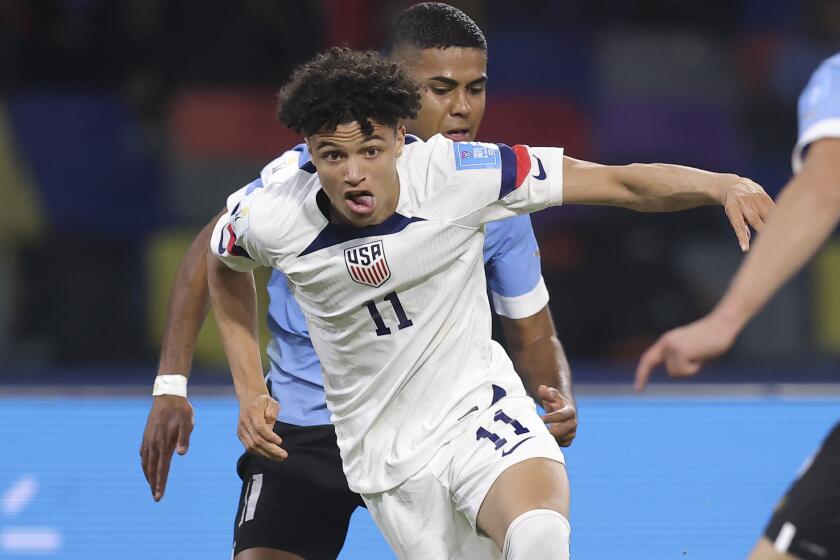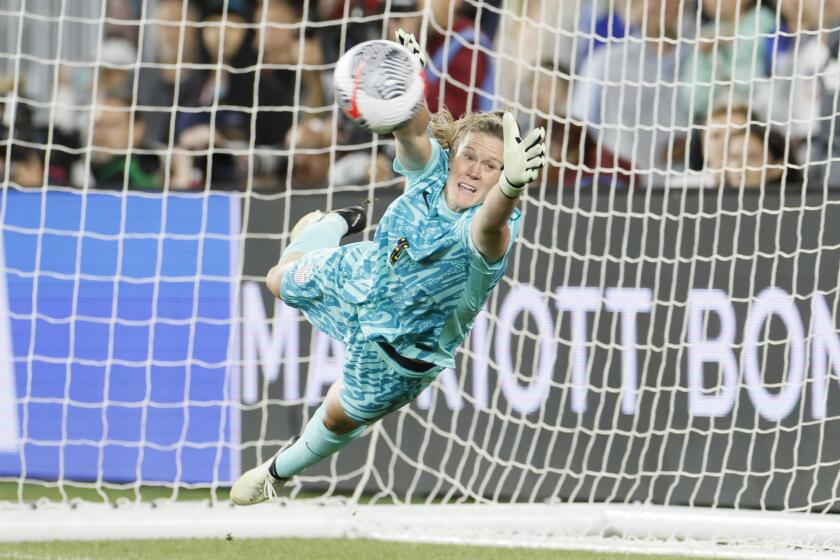Women’s World Cup attendance is lacking so far
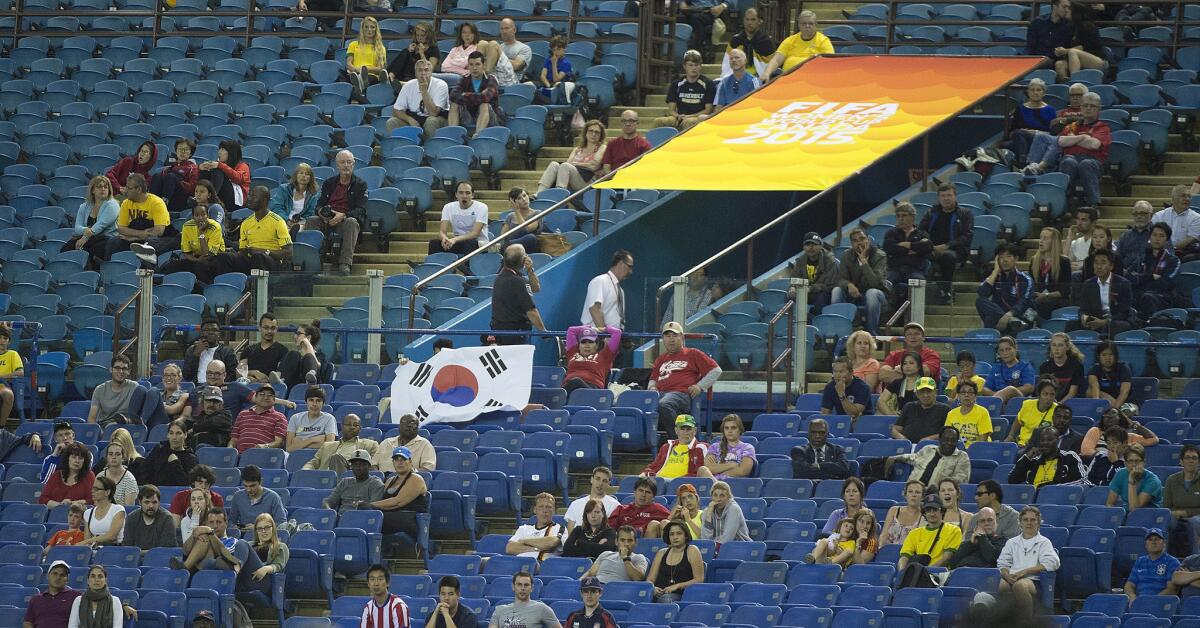
A Women’s World Cup match between Brazil and South Korea in Montreal, Canada on Tuesday was attended by just 10,175 fans.
Canada remains underwhelmed by the women’s World Cup, with a combined total of 21,861 fans showing up for four opening-round games in two cities Tuesday.
The U.S. drew more than that for a friendly with Mexico at StubHub Center last month.
The empty seats were especially noticeable at Montreal’s massive Olympic Stadium, where attendance for a doubleheader starring Brazil and Marta, its five-time world player of the year, was just 10,175.
At about the same time, a doubleheader in which France beat England and Colombia tied Mexico failed to fill a 15,000-seat converted track and field facility in rainy Moncton, New Brunswick.
Despite a CBC report that some ticket prices had been reduced to $5, the crowd was counted at 11,686.
Four days into the tournament, only two venues and four games have sold out: Edmonton’s Commonwealth Stadium, where a Canadian-record crowd of 53,058 saw the tournament-opening doubleheader featuring the host country, and Investors Group Field in Winnipeg, where 31,148 saw the U.S. play Australia. Nigeria met Sweden in the other game.
But the majority of the fans at the two games in Winnipeg traveled up from the U.S., which is about a 90-minute drive south of the city.
“It’s phenomenal. It basically feels like we’re playing at home with the crowd that we have here and the support,” American midfielder Tobin Heath said.
With each of the 24 teams having played once in the World Cup, the tournament pauses Wednesday before the second round of group play begins Thursday.
Picture-perfect goal
Goal-line technology was used for the first time in a women’s World Cup on Tuesday, confirming a first-half score by Mexico’s Veronica Perez.
Colombian keeper Stefany Castano almost made the save cleanly, getting a hand on Perez’s bending kick from the corner and deflecting it to the bottom of the crossbar. A Colombian defender then cleared the ball away, but not before it had crossed the goal line.
Goal-line technology is similar to the system used in major tennis tournaments to determine whether a shot landed in bounds. In soccer, more than a half-dozen cameras trained on the goal track the shot and send the data to a computer, which then triangulates the ball’s position relative to the goal line.
In the case of Tuesday’s play, when Perez’s shot crossed the line a signal was sent to referee Therese Neguel, who awarded the goal.
The honor system
FIFA required every player in the women’s World Cup to declare that she is, in fact, a woman.
Thankfully, FIFA will take their word on that, stopping short of gender-testing exams. But since 2011 teams have been required to sign a “declaration of agreement on gender verification” before filing their rosters for the tournament. FIFA requires the same verification before the men’s World Cup as well.
The CBC quoted German midfielder Lena Goebling as saying she and her teammates “have all been very amused about the test and have not taken the whole thing so seriously.”
Follow Kevin Baxter on Twitter @kbaxter11


